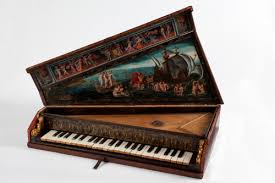Music existed since time immemorial. While there is certain evidence of the existence of music, there is no written evidence of it. Since many were illiterate, music was passed on through the word of mouth rather than writing them down and recording them. Medieval music was often church music written by the clergy since they were few people who could write.
Medieval music had numerous systems of musical notations, rhythms and there was no pattern until the 12th century. A square notation was a system which was developed to make a reading of music easy. However, there were a few difficulties because the reading was not accurate so it was not decipherable.
During the 1200s, Alphonso, who was the ruler of modern-day Spain composed, compiled a large number of textbooks on subjects ranging from art to literature. He translated these from Arabic scripts to Castilian.
By the 11th century, the troubadours of France developed the love songs. This style of sings influenced many beyond France. In the English region, secular medieval music did not make an introduction till the 13th century.
Dance Music
There were some types of music was made specifically for dance. Theses medieval dance music was separated into two categories. One type was where the sections started and ended differently and the other type was where the section started the same and ended differently. Some examples of medieval dance forms which were of these categories were estampie, rotta, trotto, royal dance, saltarello.
Medieval Musical Instruments
String Instruments during the Middle Ages were made of sheep’s intestines for the rings and sometimes the wires were of gold, silver, brass, iron, bronze. Some musical instruments which existed during the Medieval Times were the harp, lute, flute, fiddle.
There were woodwind instruments which were to be blown like trumpets or bagpipes. The strings instruments were to be played like the violins and guitars and the percussion instruments were like the drums and bells. Woodwind instruments were the flute, trumpet, pipe, flageolet, crumhorn, gemshorn and recorder. String instruments included the lute, viols, psaltery, Chittarone, cittern, dulcimer and gittern. Percussion instruments were the cymbals, triangles, drums, timbrels, and bells.
Musical Notes
There was a lack of sharps and flats in the musical notes during the medieval times. This meant that notes which began on a D was different from those which began with E.
